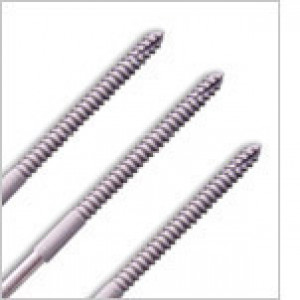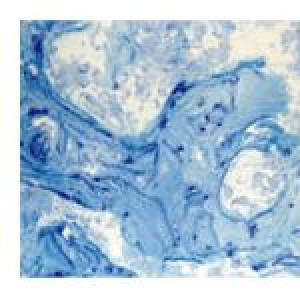| Einco Biomaterial Ltda |


| Registration Date | 24 May 2018 |
| Revision Date | 24 May 2018 |
| Share |
Medicine Prosthesis and Orthopedy
ImplantMECHANICAL RESISTANCE It presents the necessary mechanical strength, desirable for support and scaffold in the process of bone reconstruction, incorporating the new neoformed tissue being replaced gradually by the natural process of bone remodeling. ABSENCE OF INFLAMMATORY REACTIONS Scientific research and clinical observations demonstrate the absence of undesirable inflammatory reactions, the absence of rejection, cytotoxic reactions, immuno-allergic and systemic reactions. RADIOPACO Radiologically, radiopaque is present, due to the high calcium content (Ca), facilitating its identification. ARCHABOUT / MATRIX OSTEOSYNT® forms a support matrix desirable for the time required for the deposition and maintenance of bone tissue that adheres strongly to its surface by chemical process and due to the characteristics of its surface, penetrating its porous structure, incorporating it fully to the new fabric, as an integral part. CONDUCTOR Still active in the cellular process of osteoblastic mitosis with the release of calcium ions in the place, functioning as a conductive and intrinsic inducer of the process with greater speed and condition of mechanical strength required.
OSTEOSYNT® is a brand of materials, produced by EincoBio , used in Medicine and Dentistry for the repair of small and large bone defects, reconstruction of long bones, recovery of lost areas, correction of natural bone loss acquired over the years and also for aesthetic purposes, plastic surgery, among others, registered since 1995 with the Ministry of Health of Brazil.
OSTEOSYNT® products are made from bioactive bio-bio. of the third generation, biphasic, micro-macro porous, composed mainly of hydroxyapatite (HA) and beta-tricalcium phosphate (B-TCP), besides other minerals. Because it has a composition very similar to the bone mineral matrix, Osteosynt is gradually replaced by the new tissue formed, according to the metabolic activity of each individual, with greater efficiency.
OSTEOSYNT is biphasic because it brings together, in a balanced manner, two important phases for a fill material: the more soluble phase of bioceramics 2nd generation ßTCP and more stable phase of bioceramics 1st generation HA, which indicate how the material more effective for bone tissue reconstruction among the others on offer, and for its association with its other characteristics.
The balanced combination of these components allows for a balance between the time of resorption of the material by the body, reconstitution of bone and maintenance of mechanical strength, since it has a more stable phase (HA), which is resorbed more slowly and a more soluble (B-TCP), which is less stable and more rapidly reabsorbed.
The bioceramic structured nano, micro, meso and macropores intercommunicate, appropriate architecture and geometry creates in the body proper local condition for the deposition of cells, proteins, substances and autogenous structures that allow the organism make the natural process of formation within the pores and on the surface of the material.